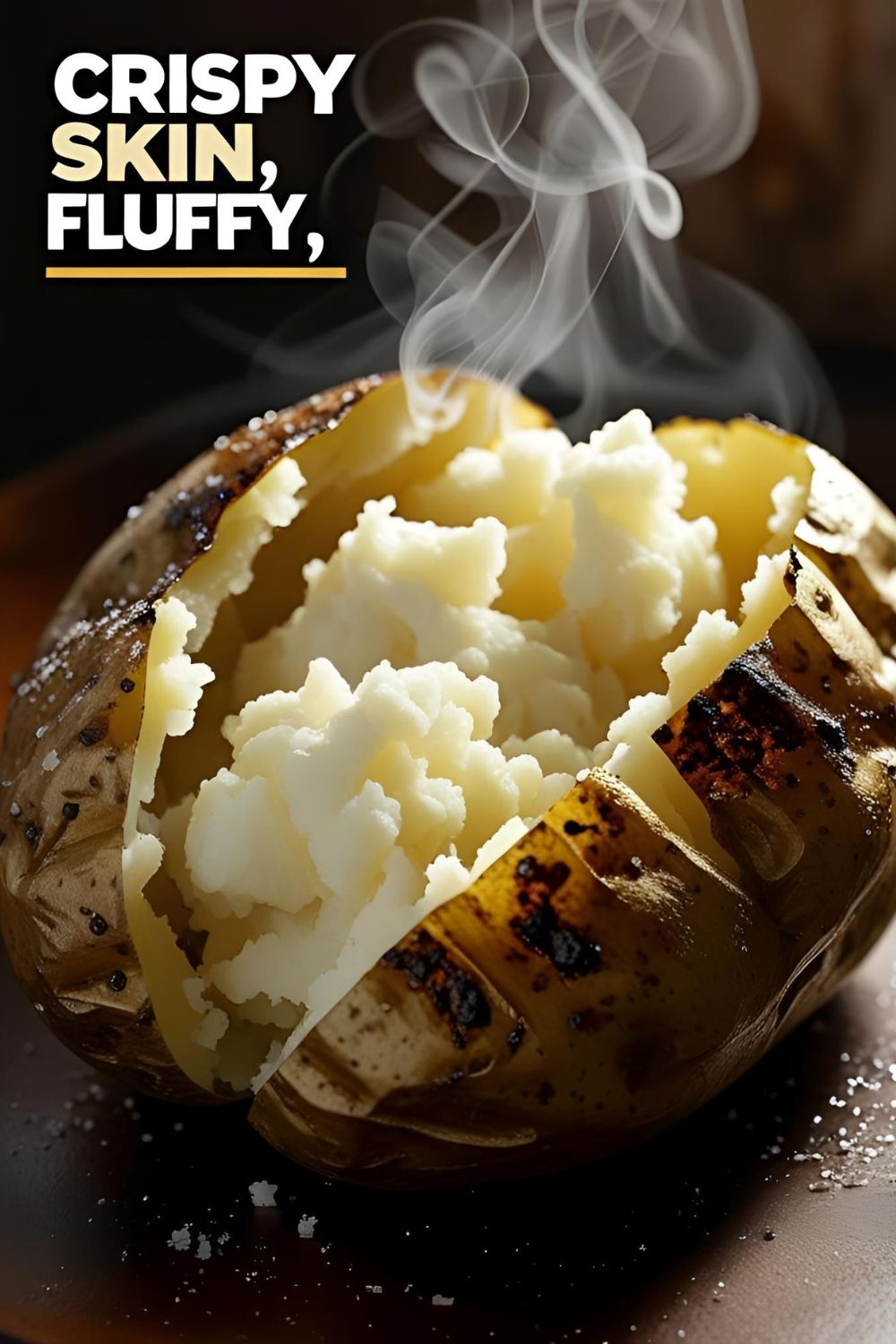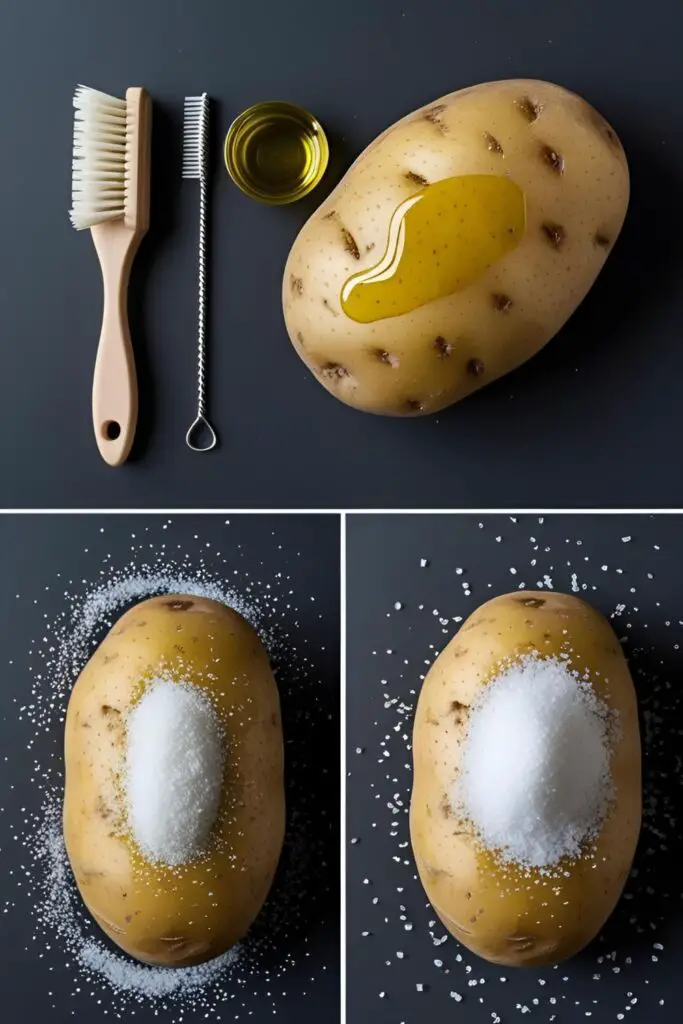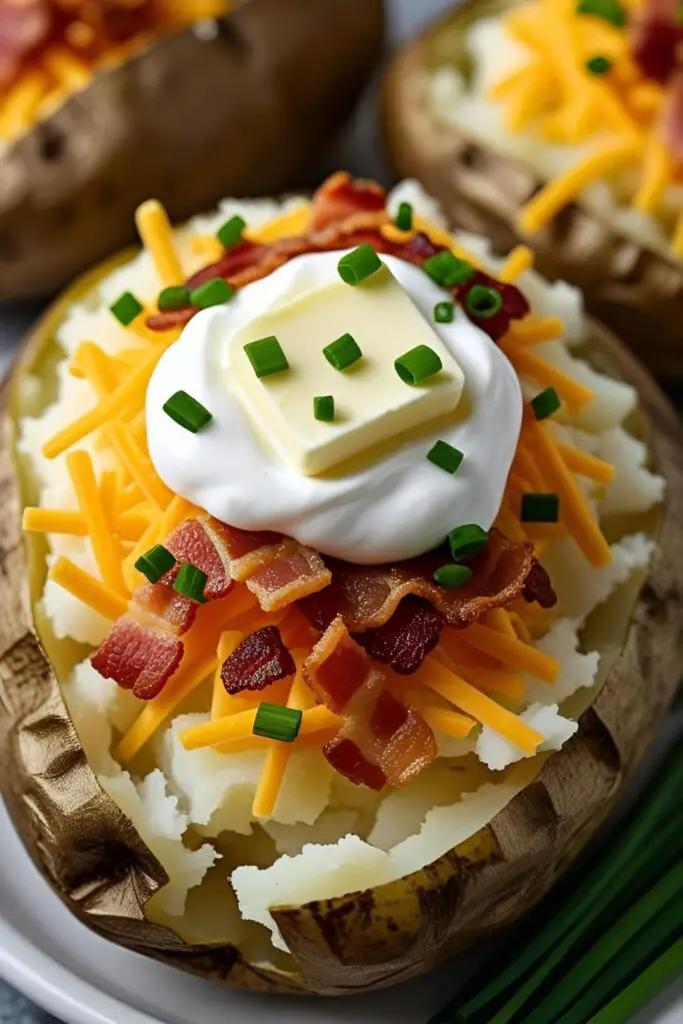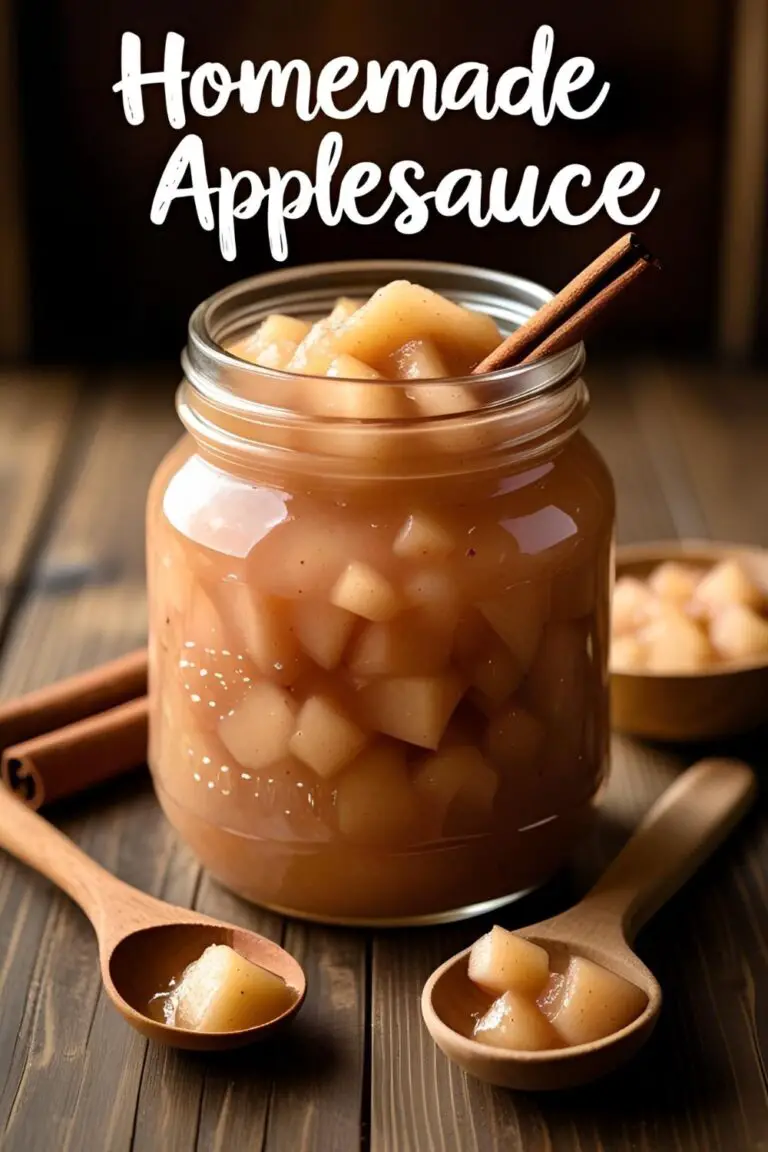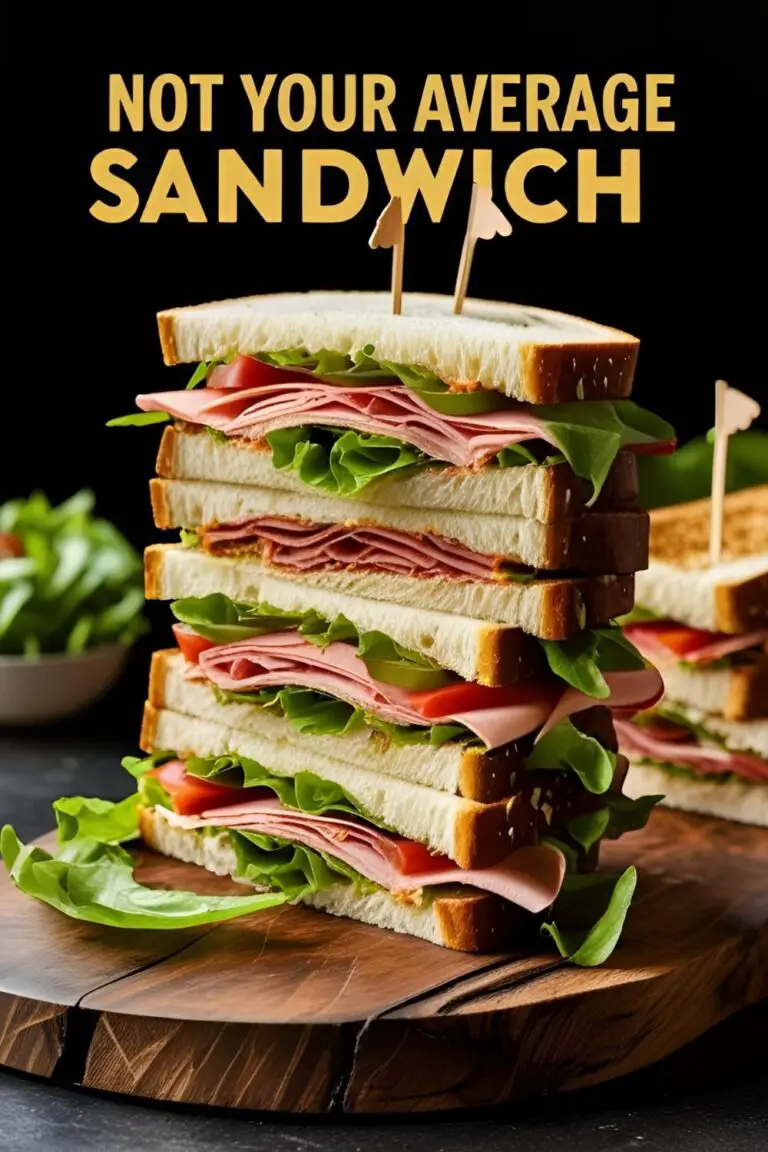How to Make the Perfect Baked Potato (Crispy Skin & Fluffy Inside!)
How to Make a Perfect Baked Potato (No, Really, It’s Life-Changing)
Let’s be honest. You think you know how to make a baked potato. You poke it a few times, maybe wrap it in foil like a tiny silver mummy, and toss it in the oven for a while. What emerges is… fine. It’s a cooked potato. But you’ve also been to a steakhouse and had that baked potato—the one with skin so crispy and salty it’s like a potato chip, and an inside so impossibly light and fluffy it’s like a savory cloud. You’ve wondered, “What dark magic is this?” My friend, it’s not magic. It’s a technique, and today I’m going to teach you how to make baked potatoes that will change your entire perspective on this humble spud. Prepare to enter the crispy-skinned, fluffy-interiored promised land.
Why This Method Is the Only One You’ll Ever Need
Why should you listen to me about a simple potato? Because this method transforms a boring side dish into the star of the show. We are talking about a perfect textural contrast: a shatteringly crisp, flavorful skin that you’ll actually want to eat, and an interior so light and fluffy it’s begging to be loaded with butter and sour cream. This isn’t just a potato; it’s an experience.
Beyond being ridiculously delicious, this recipe is laughably easy and costs next to nothing. It’s the ultimate blank canvas for an endless variety of toppings, making it a perfect weeknight dinner, a fancy side for a steak, or a build-your-own potato bar for a party. You’ll never look at a foil-wrapped, soggy spud the same way again.
The Holy Trinity of Ingredients
You’re going to love this. The ingredient list is so short, you already have everything you need. I guarantee it.
- Russet Potatoes: This is non-negotiable. Russet potatoes (sometimes called Idaho potatoes) are high in starch and have low moisture content, which is the scientific formula for a fluffy interior. Using waxy potatoes like red or Yukon Gold will result in a gummy, dense texture.
- Olive Oil (or Bacon Fat): Just a little bit to rub on the skin. This helps the skin get crispy and allows the salt to adhere. For an next-level experience, use leftover bacon fat.
- Coarse Salt: Kosher salt or coarse sea salt is what you need. The large crystals provide texture and flavor, creating that irresistible, crackly skin.
The Tools for Potato Perfection
You don’t need much, but these few items will make the process foolproof.
- A Stiff Vegetable Brush: Your potatoes have been living in the dirt. You need to scrub them like you’re trying to remove their past sins.
- A Fork: For the essential act of stabbing.
- A Baking Sheet: Not for baking the potatoes on, but for placing on the rack below to catch any potential drips.
- Oven Mitts & Tongs: For safely wrangling a potato that is the temperature of molten lava.
Step-by-Step to the Best Potato of Your Life
Follow these simple steps, and you’ll be rewarded with potato perfection.
Step 1: The Prep and The Scrub
First, preheat your oven to 400°F (200°C). While it’s heating, give your potatoes a thorough scrubbing under running water with your vegetable brush. Once they’re clean, dry them completely. A wet potato will steam, and steam is the mortal enemy of crispy skin.
Step 2: The Stabbing
Using a fork, pierce the skin of each potato 8-10 times, all over. This allows steam to escape during baking. Does this prevent a potato from exploding in your oven? Yes. Is a potato explosion likely? No. Is it a catastrophic mess if it does happen? Absolutely. Just poke the potato.
Step 3: Oil ‘Em Up
Pour a little olive oil or melted bacon fat into your hands and rub a thin, even layer all over the entire surface of each potato. You’re not trying to deep-fry them, just give them a light coating.
Step 4: Make It Rain (Salt)
Now, generously sprinkle your coarse salt all over the oiled potatoes. Be liberal! Roll them around to make sure they’re well-coated. This salt is what will draw out the moisture from the skin and create that perfectly crisp, flavorful crust.
Step 5: The Bake (No Foil Allowed!)
Place the prepared potatoes directly on the middle oven rack. Do not put them on a baking sheet! Placing them directly on the rack allows the hot air to circulate all around the potato, ensuring a uniformly crispy skin. Put a separate baking sheet on the rack below them to catch any oil drips. Bake for 50-60 minutes.
Step 6: The Squeeze Test & The Fluff
You’ll know they’re done when the skin is dark, crisp, and wrinkly, and the potato yields easily when you give it a gentle squeeze with an oven-mitted hand. As soon as you take them out, use a sharp knife to slice them open lengthwise to let the steam escape. Then, use a fork to fluff up the inside.
Calories & Nutritional Info (Before the Fun Part)
Let’s talk about the potato in its pure, unadulterated form.
- Calories: A medium-sized Russet potato has about 160 calories.
- Nutrients: They are an excellent source of potassium (more than a banana!) and Vitamin C.
- The Skin: Don’t throw it away! The skin is packed with fiber and other nutrients. This recipe makes the skin the best part.
- The Disclaimer: This nutritional info is for the potato alone. Once you add a tablespoon of butter (100 calories), a dollop of sour cream (60 calories), and a sprinkle of cheese (100 calories)… well, you do the math. 🙂
Common Mistakes to Avoid (Baked Potato Blunders)
These are the crimes against potato-kind that you must never commit.
- Wrapping It in Foil: This is the #1 mistake people make. Foil traps steam, which makes the skin soft and soggy. If you want a steamed potato, wrap it in foil. If you want a baked potato with crispy skin, let it be free.
- Microwaving It First (or for the whole time): The microwave steams the potato from the inside out, resulting in a gummy, unevenly cooked texture. The oven is the only way to achieve true baked potato greatness.
- Forgetting to Poke Holes: While a potato explosion is rare, it’s not a myth. Poking holes is a simple insurance policy against a starchy mess.
- Using the Wrong Potato: Using a waxy potato like a red or new potato will give you a dense, almost creamy interior, not the light, fluffy texture you’re looking for. Russets are the one and only choice.
Variations & Customizations (The Potato Is Your Canvas)
The perfectly baked potato is just the beginning. Now it’s time to get creative.
- The Classic Loaded Potato: The holy trinity of toppings: a pat of salted butter, a generous dollop of sour cream, a shower of shredded sharp cheddar cheese, crispy bacon bits, and finely chopped chives.
- Chili Cheese Potato: Turn your potato into a full meal by topping it with a scoop of hearty chili (with or without beans, we don’t judge), shredded cheese, and a dollop of sour cream or Greek yogurt.
- Twice-Baked Potatoes: The ultimate potato upgrade. Slice the baked potatoes in half, scoop out the fluffy insides, mash them with butter, sour cream, cheese, and bacon, stuff the mixture back into the potato skins, and bake again until golden and bubbly.
FAQ: Your Burning Potato Questions, Answered
Let’s solve the great potato mysteries.
1. What is the absolute best potato for baking?
Russet potatoes. Their high starch content and thick skin are scientifically perfect for creating a fluffy interior and a sturdy, crispy exterior.
2. How can I tell when a baked potato is perfectly cooked?
The skin should be dry, firm, and crispy, and a fork or knife should be able to pierce the center with absolutely no resistance. You can also give it a gentle squeeze (with an oven mitt!); it should feel soft.
3. Can I make baked potatoes ahead of time?
Yes. Let them cool completely, then store them in the fridge. To reheat, place them in a 350°F (175°C) oven for 15-20 minutes. This will help re-crisp the skin.
4. Is it really safe to put them directly on the oven rack?
Yes, it’s perfectly safe. It’s the key to getting a 360-degree crispy skin. Just remember to put another pan on the rack below to catch any drips from the oil.
5. Why is the skin on my potatoes always soft?
You’re probably wrapping them in foil or not getting them dry enough before baking. Let that skin breathe in the dry heat of the oven!
6. Can I speed up the process?
You can microwave the potato for 5-6 minutes before putting it in the oven. This will reduce the oven time by about 20-30 minutes. It’s a compromise—the texture won’t be quite as perfect, but it’s a good shortcut if you’re short on time.
7. Is it okay to eat the potato skin?
With this recipe, it’s not just okay; it’s highly recommended! The skin is crispy, salty, and delicious. Plus, it’s where a lot of the potato’s fiber and nutrients are stored.
Final Thoughts
You are now armed with the knowledge to create a truly superior baked potato. You will never again settle for a pale, soggy, foil-wrapped imposter. You are a champion of the crispy skin, a guardian of the fluffy interior. This is the kind of basic technique that, once mastered, will elevate so many of your meals.
Go forth and bake. Load it up with your favorite toppings, or enjoy it in its purest form with a simple pat of butter and a sprinkle of salt. Just be prepared for your dinner guests to ask, “How did you get the skin so crispy?!” You can just smile and say, “It’s a secret.”

